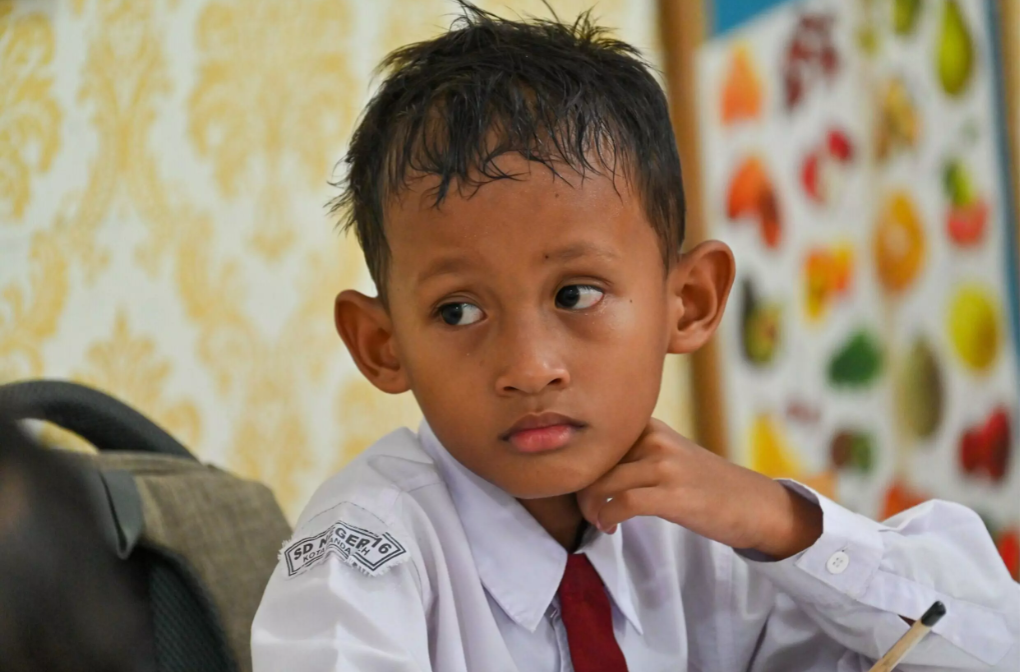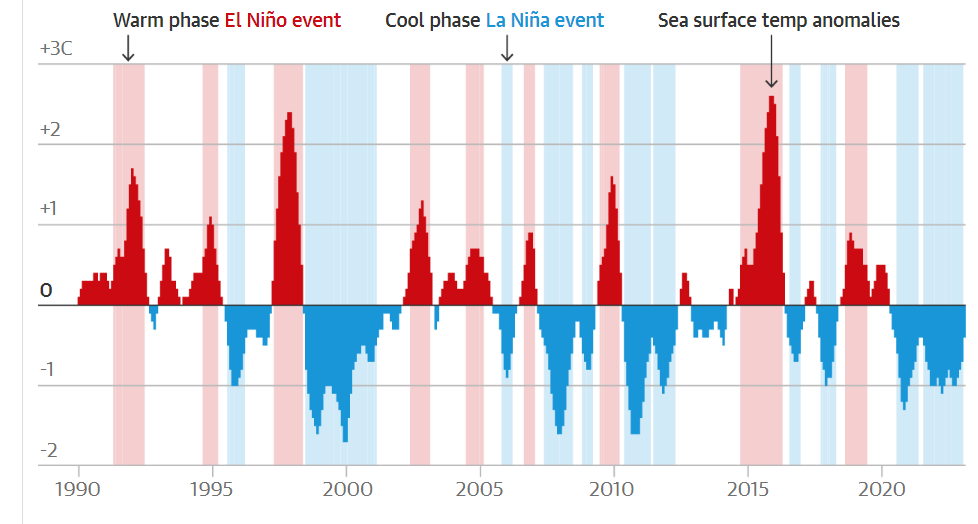Oliver Milman
Early data shows June temperatures hitting record highs ahead of El Niño that experts say will have significant heating effect
The cable car from Roosevelt Island to Manhattan last week, when haze from the Canadian wildfires shrouded New York. Photograph: Shannon Stapleton/Reuters
Global temperatures have accelerated to record-setting levels this month, an ominous sign in the climate crisis ahead of a gathering El Niño that could potentially propel 2023 to become the hottest year ever recorded.
Preliminary global average temperatures taken so far in June are nearly 1C (1.8F) above levels previously recorded for the same month, going back to 1979. While the month is not yet complete and may not set a new June record, climate scientists say it follows a pattern of strengthening global heating that could see this year named the hottest ever recorded, topping 2016.
There has been “remarkable global warmth” so far in June, confirmed Copernicus, the European Union’s Earth observation arm, which said that the first few days of the month even breached a 1.5C increase compared with pre-industrial times. This is probably the first time this has happened since industrialization, the agency said.
The long-term warming conditions caused by the burning of fossil fuels will probably receive a further pulse of heat via El Niño, a naturally recurring phenomenon where sections of the Pacific Ocean heat up, typically causing temperatures to spike across the world.
Last week, the National Oceanic and Atmospheric Administration (Noaa) said El Niño conditions are now present and will “gradually strengthen” into early next year. Michael Mann, a climate scientist at the University of Pennsylvania, said human-caused warming will be exacerbated by an event that typically adds between 0.1C to 0.2C (0.18F to 0.36F) to the overall global temperature.
“The global surface temperature anomaly is at or near record levels right now, and 2023 will almost certainly be the warmest year on record,” said Mann. “That is likely to be true for just about every El Niño year in the future as well, as long we continue to warm the planet with fossil fuel burning and carbon pollution.”
Mika Rantanen, a Finnish meteorologist, said that the spiking heat so far this month was “extraordinary” and that it was “pretty certain” it would result in a record warm June.
This year has already seen severe, record heatwaves roil places from Puerto Rico to Siberia to Spain, while blistering heat in Canada helped spur huge wildfires that blotted the skies above New York City and Washington with toxic smoke last week.
According to an update issued by Noaa on Wednesday, the world had its third warmest May in a 174-year temperature record last month, with North America and South America both having their hottest May ever recorded.
Noaa is more circumspect about the prospects of an annual heat record in 2023, placing the odds at about 12%, but has said it is almost certain the year will rank in the top 10 warmest and is very likely to be in the top five.
In May, the World Meteorological Organization warned that global temperatures will probably soar over the next five years, fueled by El Niño as well as emissions, with a new record hot year almost guaranteed during this period.
There is also a good chance the average temperature will exceed 1.5C (2.7F) beyond pre-industrial times, a key threshold agreed by governments at which point heatwaves, droughts, flooding and other climate impacts become significantly worse.
While people are feeling the heat on land, an even more remarkable burst of warmth is occurring in the seas, with Noaa confirming a second consecutive month of record high ocean surface temperatures in May. Excess heat in the oceans, which cover 70% of the globe’s surface, influence overall global temperatures, as well as warp fish populations, bleach coral reefs and drive coastal sea level rise.
“The oceans have been warming steadily but we are now seeing record temperatures which is certainly alarming given we are expecting El Niño to strengthen,” said Ellen Bartow-Gillies, a climate scientist at Noaa. “That will undoubtedly have an impact on the rest of the world.”
Bartow-Gillies said Noaa had not yet processed its temperature data for June but that it appeared the elevated heat will continue this month, although El Niño will not be a major factor until later in the year. “We are off to a pretty warm start to the year, it’s not unprecedented, but we could be getting even warmer due to El Niño,” she said.
Regardless of whether 2023 ends up the hottest ever recorded, scientists caution that the escalating impacts of the climate crisis are now starkly evident and will not be slowed until greenhouse gas emissions are radically cut.
“Without stronger emission cuts, the changes we are seeing are just the start of the adverse impacts we can expect to see,” said Natalie Mahowald, an atmospheric scientist at Cornell University. “This year and the extreme events we have seen so far should serve as a warning.”























